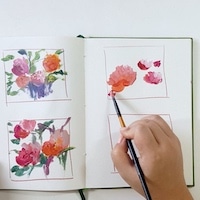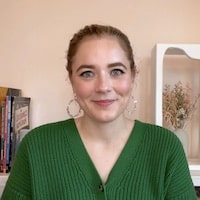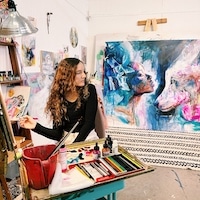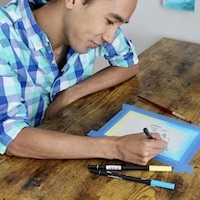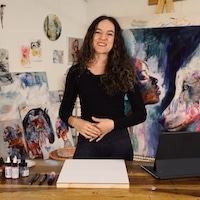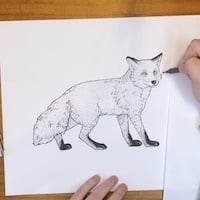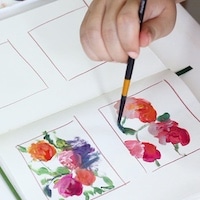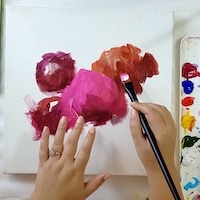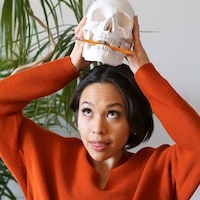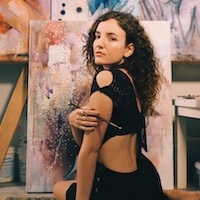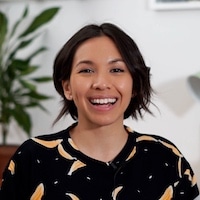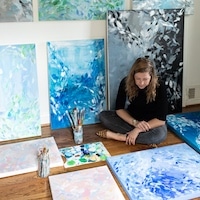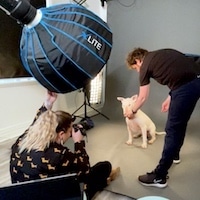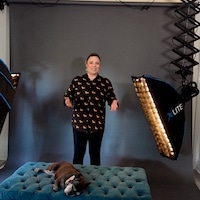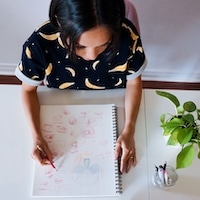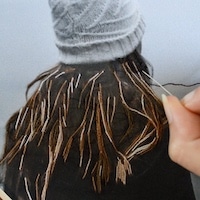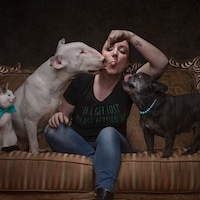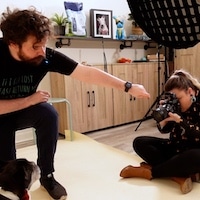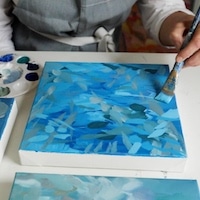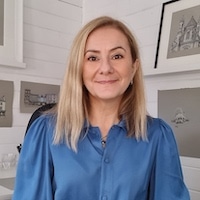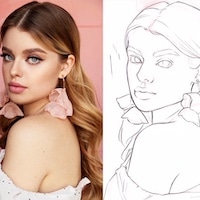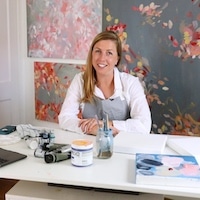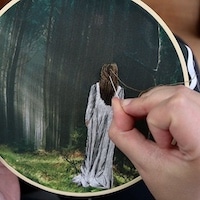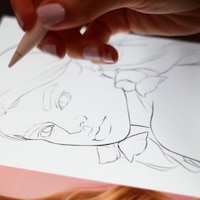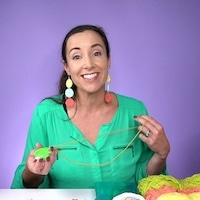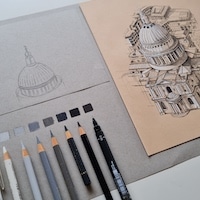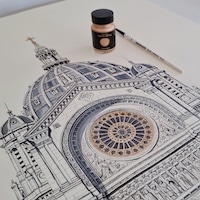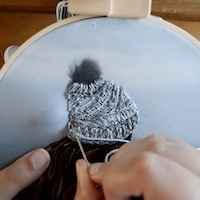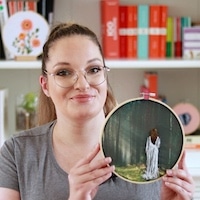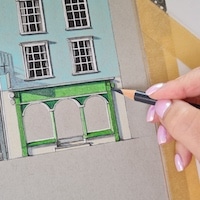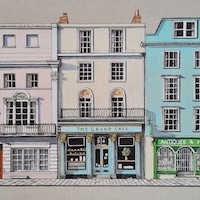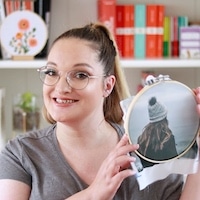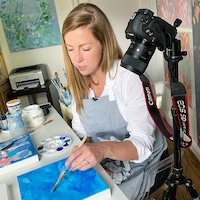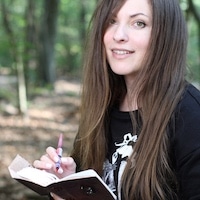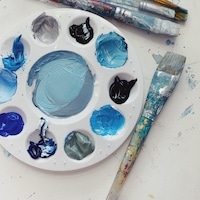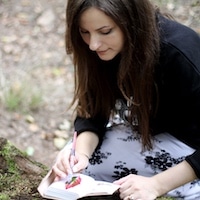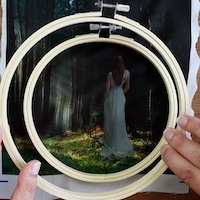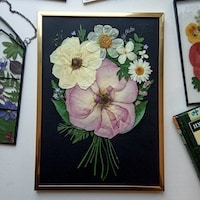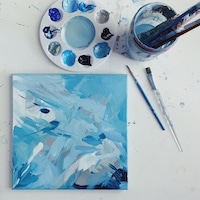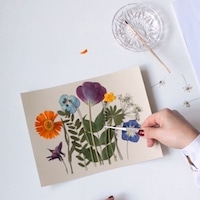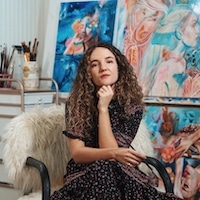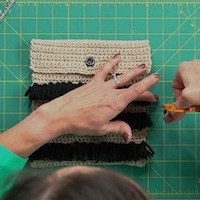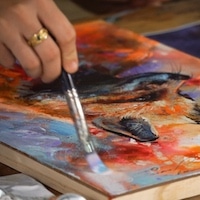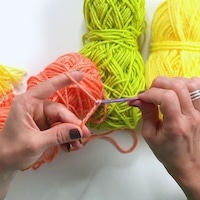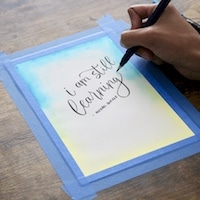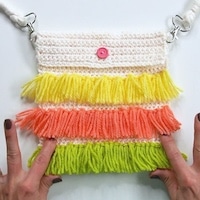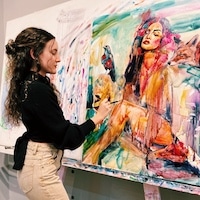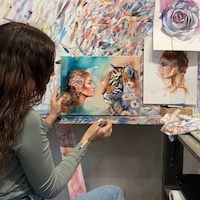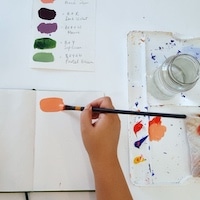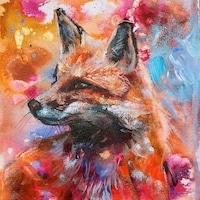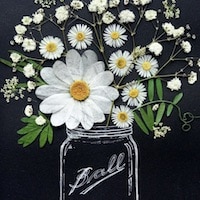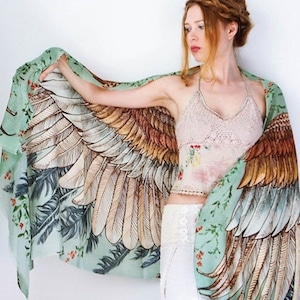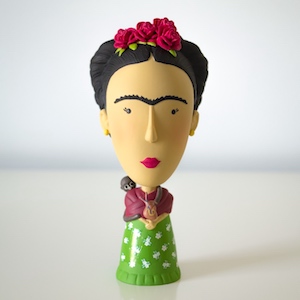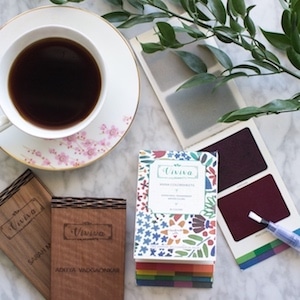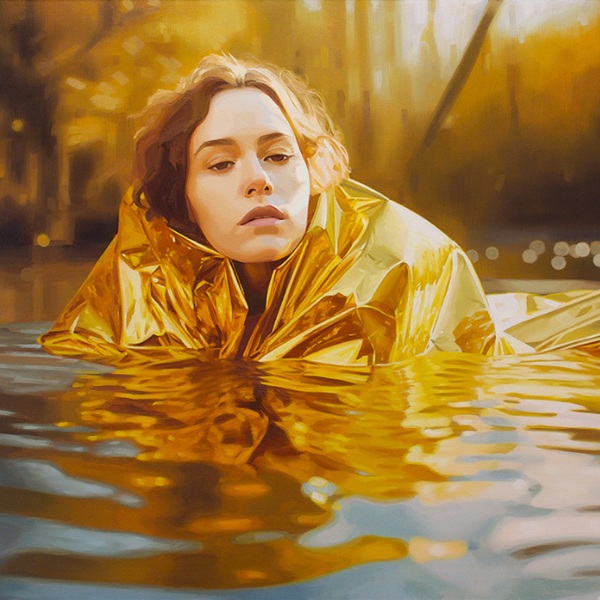
“Earthing”
For Maite Autrique, painting is more than a creative effort—it’s something that saved her life. The Mexican artist defines work as “raw, emotional, and deeply personal.” But just because something is rooted in personal experience, doesn’t mean it’s bound to stay in the realm of realistic or figurative art. Instead, Autrique takes an oneiric route, meditating on feelings and events she has faced through mind-bending compositions that evoke a form of contemporary surrealism.
Autrique has openly discussed her struggles with body dysmorphia, bulimia, anxiety, depression, PTSD, and abuse. But above all, she has been witness to how joy and love have balanced it out. This duality prompted her to become a self-taught artist and move to a small beach town, letting spirituality and untouched landscapes shape her work. In her paintings, mostly done with oil, the elements are not just forces of nature; they also serve as symbols of transformation.
For Autrique, each brushstroke is a channel to express what she can’t put into words, transforming pain and hapiness into something visible, felt, and shared. A finished painting is not the goal, but instead the result of an inner dialogue to help her process the muddy parts of life. Despite the grimness, color always shines through, serving as a reminder that there is always a way out, no matter how wild it may seem. “I believe art can heal—not just the artist, but anyone willing to look closely,” she firmly says in her artist statement.
We had a chance to talk to Autrique about her beginnings in art, her creative process, and what art has done for her mental health. Read on for My Modern Met’s exclusive interview with Maite Autrique.

“Primavera en otoño_ Otoño en primavera”
How did you get started in painting?
I started painting in January 2019, after a particularly difficult emotional year. It wasn’t a planned decision. It came through an art therapy session, and something just clicked. I had no technical training, only some forgotten paints, a canvas, and a lot of emotions that had nowhere to go. That first moment felt like finally breathing after holding it in for too long.
Painting quickly became my refuge, not a goal. It helped me process grief, trauma, and the ongoing search for my identity. At first, I didn’t even consider it “art.” I was simply trying to stay afloat. But over time, it became a language I didn’t know I spoke, a way to explore freedom, authenticity, and mental health.
I’ve struggled with mental health issues since I was a child and never really felt like I fit in. It wasn’t until I started painting that I could truly process all the emotions I’d been carrying inside for so long. I’m self-taught, and everything I’ve learned came from deeply listening—to my own feelings, to music, and to silence.
That’s how it all began: not by trying to be an artist, but by trying to be honest, by trying to find myself.
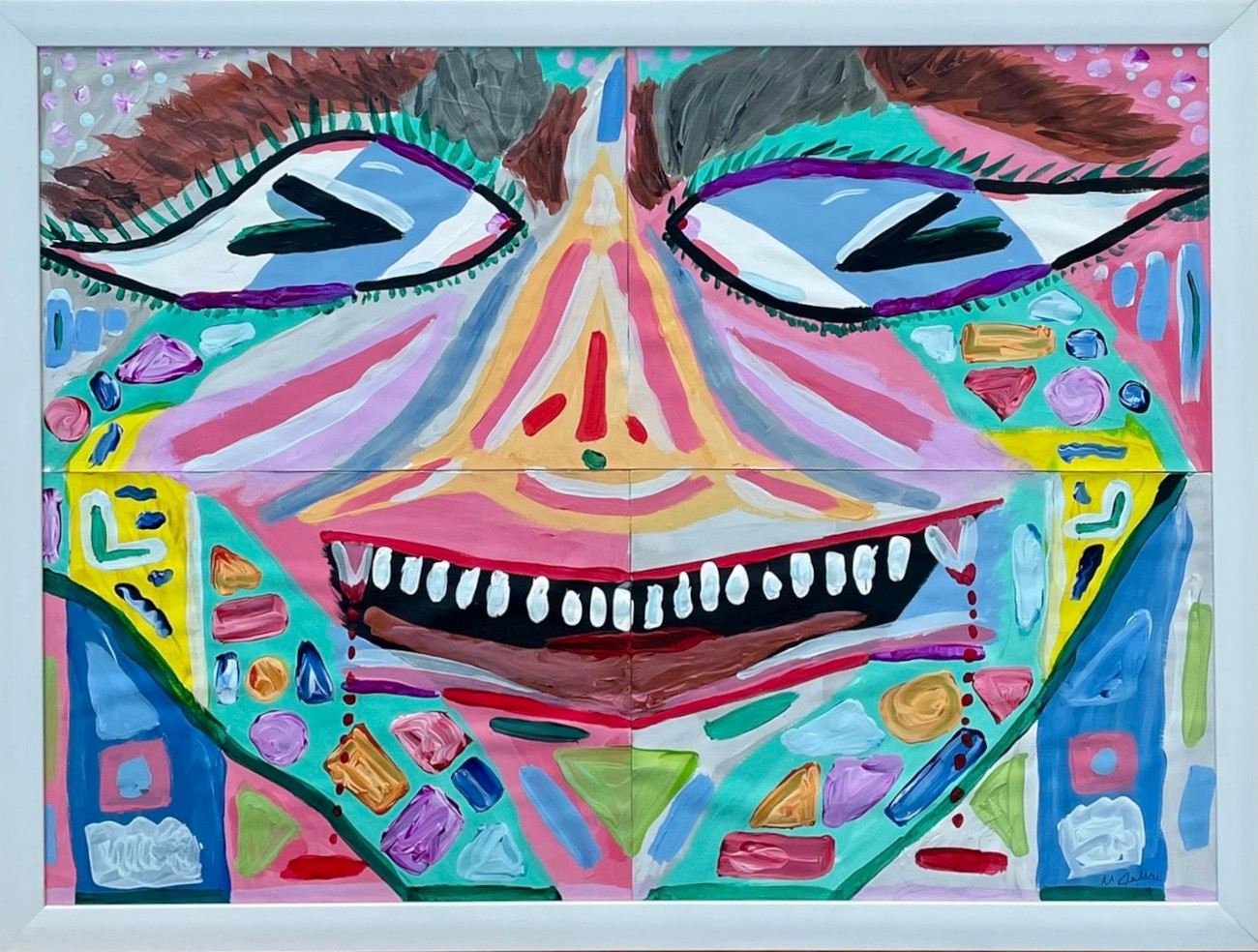
“Caníbal”
How did you develop your personal style?
My style began to take shape organically, guided more by emotion than technique. Being self-taught, I experimented with different materials and trusted my intuition throughout the process.
The real turning point came in 2020, when I painted a piece I call Caníbal (Cannibal). It was raw, intense, and unlike anything I had done before. I wasn’t trying to make it beautiful; I needed to release something inside me that I couldn’t hold in anymore. That painting was my way of processing painful memories of abuse I experienced as a child and toward the end of 2019.
That piece broke something open inside me. It showed me that painting could contain all the parts of myself I hadn’t been able to express in words. From that moment, I embraced vulnerability, distortion, and symbolism—elements that felt more honest than polished.
Over time, I began to notice recurring elements—raw emotion, symbolic imagery, and a deep connection to identity, mental health, and freedom. My style keeps evolving, but it’s rooted in that first moment where I stopped painting to please and started painting to survive.

“Refugio Cósmico”

“Felicidad”
What inspires your compositions?
I never really know where my inspiration comes from until I finish the piece I’m working on. I usually start painting intuitively—without a plan—just letting my emotions guide the process. As the work begins to take shape, I follow where it wants to go. I don’t sign a piece until it feels “alive,” until it’s saying something back to me. That’s when I can begin to understand what it means.
My surroundings often influence my work, especially the places I live in and the presence of nature around me. There’s also a lot of symbolism that emerges naturally, without me consciously planning it—certain elements tend to repeat themselves across different works. Interpreting those symbols is always a challenge because it requires digging deep into my emotional landscape. My compositions are less about constructing an image and more about uncovering something hidden within.

“Astronauta”
You’ve spoken about mental health and how art saved your life. What role do these themes play in your practice?
Mental health is at the core of my work—not just as a theme, but as the reason I began painting in the first place. Art became a lifeline during a time when I didn’t know how to cope with everything I was feeling. I didn’t start with the intention of being an artist; I started because I needed to survive.
Painting allows me to explore and process the most vulnerable parts of myself. It’s how I give shape to things I can’t always explain in words—anxiety, grief, identity, healing. Every piece holds a part of that inner world. My practice is not about hiding pain but transforming it into something honest, even beautiful in its rawness.
Because I’ve experienced the therapeutic power of art firsthand, I see each work as both a personal release and a way to connect with others who might be going through similar struggles. For me, painting is not separate from healing—it is healing.
Whenever I see my paintings in order of completion, it’s a powerful experience because I can witness my own emotional growth and journey over the years.
For example, right now I’m focused on being more grounded and present. Some of my earlier paintings express how comforting it is to be zoned out—even while sober—because that space feels safe, where nothing bad can happen. My recent works, however, are about rooting myself in the moment, learning to fully experience life as it is, even when it gets difficult, without trying to escape.

“Gravedad”

“Fatiga”
What’s your creative process like?
My creative process always starts in my notebook. I make several simple sketches—nothing detailed—until one of them just clicks. I can’t explain it rationally; I just know which one needs to be taken to the canvas. Once I’ve found it, I redraw it onto the canvas, adapting it as it evolves—especially since the scale and shape are usually different.
I keep the drawing simple and let the oil paint take over from there. That’s when intuition steps in. I follow what the painting asks for, letting colors, textures, and emotions guide me. Music is also a huge part of the process—it helps me stay connected to what I’m feeling and often shapes the mood and rhythm of the piece.
Even though I begin with a sketch, the final work always transforms into something more layered, often with symbolic elements that appear without me consciously planning them. For me, painting is surrender and instinct.
I really want my paintings to do to people what music does to me: to feel everything deeply and be able to let it out.

“Transitar”
Has living in a small beach town informed your artistic vision?
Absolutely—living in a small beach town had a huge impact on my artistic vision. Being surrounded by nature and water, the rhythm of the ocean, and the slower pace of life allowed me to connect more deeply with myself and create from a place of honesty and fluidity. There’s something about being away from the noise that helped me hear myself better.
About four months ago, I moved to an even smaller mountain town, and that transition to the forest brought a different kind of solitude and introspection—the grounding I was talking about earlier. Being an Aries with Pisces dominant in many of my planets, I really needed some earth energy. The landscape changed, but the silence, the presence of nature, and the sense of distance from the outside world continued to shape how I create.
Both places pushed me to observe more, feel more, and trust my intuition. Living in those environments has helped me simplify—not just visually, but emotionally. I don’t chase concepts; I let them come. These places have influenced not only how I see, but how I listen—to my surroundings, to my inner world, and to what each painting needs to become.

“Iluminación”

“Oasis”
Is there any style that you feel particularly influenced by?
Not really—my work doesn’t follow a specific artistic style or movement. But since I was very young, I’ve been deeply inspired by Van Gogh. His textures, his colors, and especially his story have always moved me. I’ve felt a strong emotional connection to his work and his way of seeing the world.
He was an Aries, like me, and somehow I’ve always identified with his intensity, his vulnerability, and his need to paint as a form of survival. More than a stylistic influence, Van Gogh has been a constant reminder that art can be raw, honest, and deeply human.

“Abducción”
What do you hope people will take away from your art?
I hope people feel something real when they see my work. I don’t expect them to understand exactly what I was feeling when I painted it, but I do hope it resonates with something inside them. My art comes from a place of vulnerability, and if it can make someone feel less alone, more seen, or even just pause and reflect, then it’s done its job.
I want my work to be a space where complexity is allowed, where pain, healing, identity, and contradiction can coexist. I hope it invites people to connect with their own emotions and find beauty in their own process, no matter how imperfect it is.
More than anything, I want my art to speak honestly. If it touches someone deeply—even if they don’t know why—that means everything to me.

“Sinergia”
My Modern Met also chatted with Maite Autrique at BADA México Art Fair 2025 in Mexico City. Watch the interview below:
View this post on Instagram
Maite Autrique: Website | Instagram | TikTok
My Modern Met granted permission to feature photos by Maite Autrique.
Related Articles:
Artist Faces Her Fear of the Ocean by Painting Powerful Crashing Waves
Artist Meditates Upon Postcolonial Identity With Hybrid Paintings [Interview]
High School “Loner” Paints Stunning Portraits To Reconnect With Peers Before Graduation
Monumental Oil Paintings Explore Personal Transformation Through Swirling Ethereality


